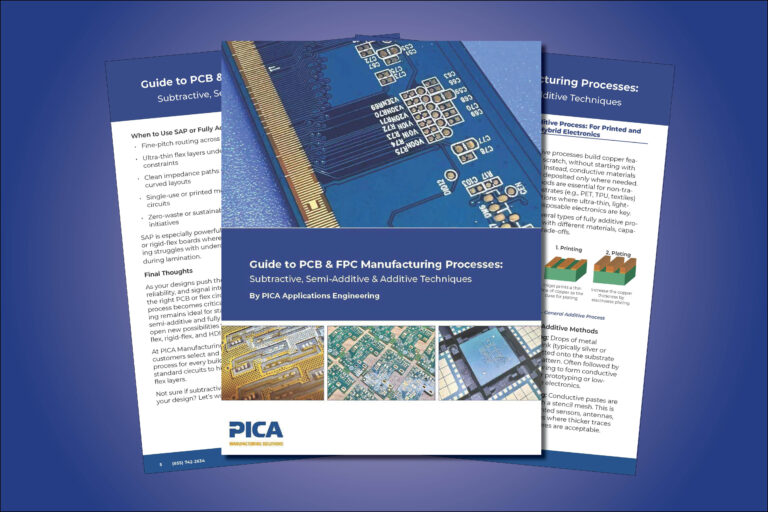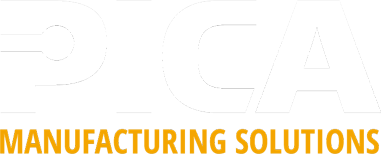Download Guide to PCB & FPC Manufacturing Processes White Paper.
Guide to PCB & FPC Manufacturing Processes: Subtractive, Semi-Additive & Additive Techniques
Explore the essential differences between subtractive, semi-additive (SAP/mSAP), and fully additive PCB manufacturing processes in this comprehensive guide by PICA. Whether you’re designing rigid, flex, or rigid-flex PCBs, understanding how copper features are formed is crucial for achieving optimal signal integrity, fine-pitch routing, and mechanical reliability. Learn how traditional subtractive etching is used for standard-density boards, how semi-additive processes enable advanced HDI and flexible circuit designs, and how fully additive methods like inkjet printing and electroless plating support next-gen flexible hybrid electronics (FHE), wearables, and medical sensors. Discover how choosing the right fabrication technique can improve impedance control, reduce copper waste, and meet the demands of modern miniaturized electronics.

